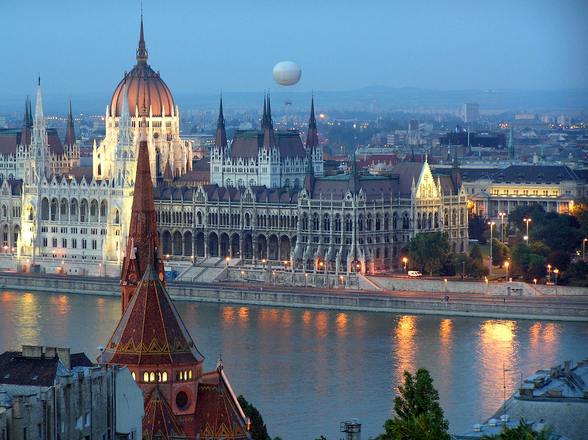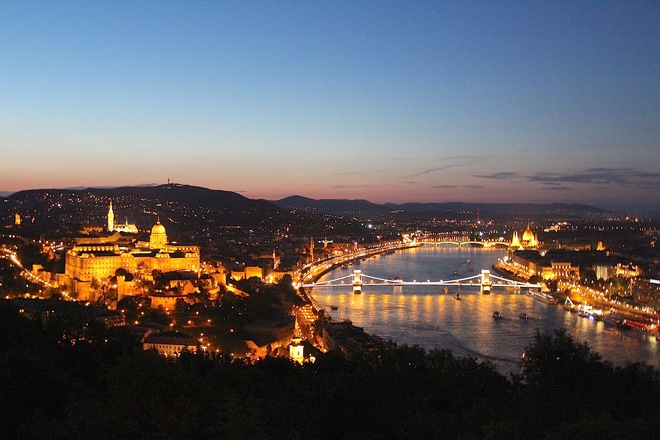Hungary and Budapest information
Hungary is a landlocked country of 93,030 km2 area in Central Europe, in the middle of the Carpathian Basin. It is bounded on the north by Slovakia; on the northeast by Ukraine; on the east by Romania; on the south by Serbia, Croatia, and Slovenia; and on the west by Austria. Plains and gentle hills of the Pannonian Basin dominate its surface. Some inselbergs form 600-1000 m high mountain ranges. Temperate grasslands, agricultural land, meadows and non-coniferous forests characterise the landscape. Two major rivers: the Danube and the Tisza flow across the country from north to south. Lake Balaton, the biggest lake in Central Europe is a favourite target of tourists because of its warm water and nice landscape.
During its more than 1000 years of existence Hungary has experienced every possible historical ups and downs. It was several times invaded by different empires, occupied neighbouring areas, suffered several subdivisions, won battles and campaigns, lost world wars, survived civil wars and fallen revolutions. Since 2004 Hungary has been a member of the European Union.
Hungary has a slowly diminishing population of 10 million. The capital: Budapest is the most densely populated area with its 2 million inhabitants. Major cities of over 100,000 inhabitants are Debrecen, Miskolc, Szeged, Pécs, Győr, Nyíregyháza, Kecskemét and Székesfehérvár.
The dominant Hungarian (Magyar) population arrived from the east, from the Ural region. Its Finno-Ugric language and its traditional folklore is different from those of the surrounding Slavic, German and Romanian populations. Today’s Hungary hosts ethnic minorities (altogether 10%) including Roma (Gipsies), Germans, Slovakians, Croatians, Serbs, Romanians etc. Nearly 3 millions Hungarians live outside Hungary as minorities, mostly in the immediate neighbourhood.
For facts and details see the Hungary portal of the government, the Fact Sheets on Hungary published by the Ministry of Foreign Affairs of the Republic of Hungary in six languages, the CIA Factbook or the wikipedia article about Hungary.
From the wide range of travel and tourism information sites on Hungary see e.g. the official Hungary tourism site or the site of the Lonely Planet.




Click the pictures to see the movies on Budapest.
Briefly on Budapest
 Budapest, the capital of Hungary, is an economic, financial and cultural centre with two million inhabitants. The city, known by many as the “Pearl of the Danube”, is undoubtedly one of the most beautifully located capitals in the world. Budapest has a history dating back over 2000 years: there are ruins from the times of the Roman Empire as well as from the Middle Ages. Its main characteristics reflect the atmosphere of the end of the 19thcentury when the millennium of the Hungarian state was celebrated. It boasts a number of museums, theatres, concert halls, a lot of restaurants and other amenities.
Budapest, the capital of Hungary, is an economic, financial and cultural centre with two million inhabitants. The city, known by many as the “Pearl of the Danube”, is undoubtedly one of the most beautifully located capitals in the world. Budapest has a history dating back over 2000 years: there are ruins from the times of the Roman Empire as well as from the Middle Ages. Its main characteristics reflect the atmosphere of the end of the 19thcentury when the millennium of the Hungarian state was celebrated. It boasts a number of museums, theatres, concert halls, a lot of restaurants and other amenities.
Due to the favourable geological setting of Budapest, there are more than 100 thermal springs and wells producing more than 30,000 m3 of thermal water supply to 12 medicinal baths. In recent years the UNESCO put several parts of the city on the World Heritage list. For more information about Budapest, you may wish to visit some of the links below:
Official home page of Budapest: http://english.budapest.hu/Engine.aspx
Official touristical web-site of Budapest: http://www.budapestinfo.hu/en/
Wikipedia site: http://en.wikipedia.org/wiki/Budapest
Selected foreign web sites:
http://www.budapest.com
http://wikitravel.org/en/Budapest

